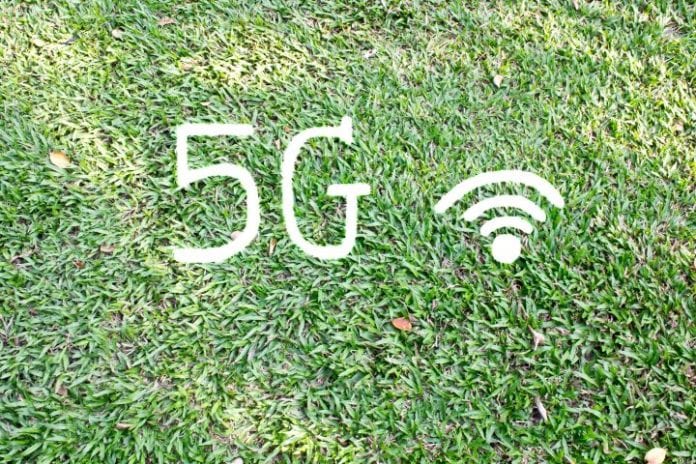Internet of things testing, continued support of “5G” development and security were the dominant themes in the test space at this year’s Mobile World Congress.
Vendors supported a number of demos that showcased new achievements in speed and features, from gigabit device speeds (Keysight Technologies and ZTE) to massive multiple-input/multiple-output antenna technology as well as underlying capabilities that will enable 5G development.
Increasing demands on devices translate to more demands on batteries; Rohde and Schwarz put out a new solution for power measurements, which it says is the only solution on the market that can correlate battery consumption data with RF signaling events. Rohde also supported a demo by Prisma Telecom Testing for two gigabit per second speeds in LTE with five-component-carrier carrier aggregation, as well as new solutions for testing internet of things security and narrowband IoT.
A new report from Markets and Markets predicts the IoT testing market will be worth about $1.4 billion by 2021, reflecting a compound annual growth rate of more than 35%.
Bittium put an emphasis on its software security and encryption offerings. In addition to its niche in the ruggedized smartphone market, Bittium put out IoT news that highlighted its platform for health care-focused wearables that is integrated with four sensors: a three-axis accelerometer, an optical heart rate sensor, a sensor for skin temperature and an EmoGraphy skin conductance sensor. The platform, Bittium said, is designed to enable rapid development and testing of new products and services that use those sensors.
The testing process itself also continues to evolve. Spirent and Nokia announced the initial deployment of a 5G Lab-as-a-Service enabled via Spirent’s Velocity test orchestration offering.
NI, meanwhile, launched the newest version of its NI-RFmx measurement software for PCI radio frequency test systems to support testing “4.5G” and 5G components like transceivers and amplifiers when used in conjunction with a second-generation PCI vector signal transceiver. NI said the solution can generate and measure up to 32 LTE carriers of 20 megahertz and specify various carrier spacing schemes.
Major operator and test vendor companies, including Keysight Technologies and Rohde & Schwarz, reaffirmed they want to see a unified 5G standard emerge from the current prestandards research, development and testing that is currently being conducted. Noticeably absent from the group were operators such as Verizon Communications and Deutsche Telekom.
In other test news this week:
-In case you were wondering “what ever happened to LTE broadcast?” Spirent Communications and Signals Research Group have been looking at the benefits of the technology for LTE. In a new benchmarking report, SRG looked at the impact of EMBMS in a commercial network in Australia.
“Although the EMBMS market has been slow to develop, it has nothing to do with the technical merits of EMBMS,” SRG concluded. “We identified and quantified substantial differences between the EMBMS SNR and the unicast SINR, thereby validating the merits of [single frequency network]. Most importantly, we document how the business case for EMBMS is justified with very, very few broadcast subscribers in each cell within the MBSFN service area.”
–EXFO continued its recent string of acquisitions this week with the purchase of Ontology Systems for $7.6 million. Ontology, based in the United Kingdom, works with real-time network topology discovery and service-chain mapping designed to provide visibility into network services. EXFO said the company will bolster its service assurance and real-time 3G analytics platforms in providing “a truly comprehensive view across physical, virtual and hybrid networks.” Full story here.
–Keysight Technologies was part of a number of 5G demos and announcements this week. Most of them are recounted here. In the meantime, Keysight launched a series of oscilloscopes: the InfiniiVision 1000 X-Series, that have 50 megahertz to 100 megahertz models starting at $449; and joined the 5G Automotive Alliance, which focuses on the connected car as a use case for 5G technologies.
Keysight will be co-chairing a new subgroup within the Telecom Infra Project focused on rethinking telecommunications network architectures and deployment. The subgroup is set to concentrate on test automation for TIP’s OpenCellular group.
–Telefónica has chosen Teoco to be the main provider for the spectrum refarming and frequency planning efforts for all of its businesses, and is also rolling out Astellia’s Nova geolocation-based Radio Access Network optimization platform. The global project has begun with an initial deployment in Spain.
-The 5G Automotive Alliance and the European Automotive Telecom Alliance signed an agreement to collaborate on defining the needs for automotive use of advanced wireless technologies, including vehicle-to-x communications. According to a statement from Erik Jonnaert, chairman of the EATA Steering Committee, the agreement “not only brings the different industry partners closer together, but also reinforces the European Commission’s strategy on cooperative, connected and automated mobility that was launched at the end of 2016. Car connectivity and automation will require a mix of communications technologies, but it is clear that 5G technology can become a key enabler of Europe’s digital highways. Together, EATA and 5GAA will contribute to reinventing the driving experience.”

